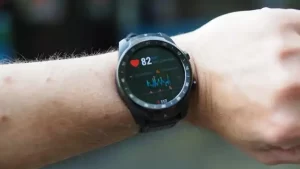UCSF: Immunity rate Mutation Long-term-effects on COVID-19
- Statins Lower Blood Lipids: How Long is a Course?
- Warning: Smartwatch Blood Sugar Measurement Deemed Dangerous
- Mifepristone: A Safe and Effective Abortion Option Amidst Controversy
- Asbestos Detected in Buildings Damaged in Ukraine: Analyzed by Japanese Company
- New Ocrevus Subcutaneous Injection Therapy Shows Promising Results in Multiple Sclerosis Treatmen
- Dutch Man Infected with COVID-19 for 613 Days Dies: Accumulating Over 50 Virus Mutations
UCSF: Immunity rate Mutation Long-term-effects on COVID-19
UCSF: Immunity rate Mutation Long-term-effects on COVID-19 . UCSF experts’ latest predictions on the COVID-19 epidemic and Immunization rate, treatment, mutation and long-term effects.

UCSF experts have carried out a new round of predictions about the epidemic, let us see what they have said.
On March 10 last year, a meeting minutes of the University of California, San Francisco (UCSF) Biological Center (Extended reading: 1.5 million people may die from COVID-19 in the United States? What did the experts say?) was widely circulated online. At that time, several experts predicted that in the next 12 to 18 months, if there are no effective treatment drugs and vaccines, 1.5 million Americans may die from covid-19.
At that time, many people thought this prediction was too bold, but since the prediction was released, the number of deaths from covid-19 in the United States has reached more than 400,000 in ten months. If it were not for the successful development of vaccines and the more or less epidemic prevention measures in various places, reaching 1.6 million would not seem alarmist. You know, it took 12 weeks to go from 200,000 to 300,000, and it took less than 5 weeks to go from 300,000 to 400,000.
It took less than 5 weeks for the number of deaths from covid-19 in the United States to rise from 300,000 to 400,000 (picture from The Washington Post)
The first month of 2021 is coming to an end. UCSF experts have carried out a new round of predictions about the epidemic. Let us see what new content they have.
PETER CHIN-HONG Professor of Medicine
Q: What is the effective immunization rate to allow workplaces and businesses to reopen? When will we reach this number?
A: For herd immunity, I believe the 70% vaccination rate may be a magic number. Considering the potentially more contagious variants, some experts have increased this number to 80%, but it depends on how the new variant takes off. Even before we reach herd immunity, as more people are vaccinated, the speed of transmission will slow, so we will gradually return to normal starting in the spring. However, to reach the “normal” before COVID, and to achieve herd immunity nationwide, it may take until autumn. Global herd immunity may not be until the summer of 2022. Now everyone is paying attention to the availability of vaccines-how many tens of thousands of vaccines we could get two months ago-but the acceptability of vaccines is what makes me nervous. People are still wary of vaccines due to news about allergic reactions, politics, and deep-rooted hesitation in communities of color. If my concern about acceptability is unfounded, we can have Thanksgiving and Christmas in 2021. If we do not reach 70%, we will be in trouble. There will be some openings, but still need to wear a mask. In the future, there may be certain events that are only open to people who have been vaccinated.
GEORGE RUTHERFORD Professor of Epidemiology and Biostatistics, Lucia Professor of Preventive Medicine
Q: Before we can vaccinate enough people to achieve herd immunity, do you expect a fourth wave of infections?
A: Although we are all eager to avoid the fourth wave of infection, it is unlikely that enough people will be vaccinated to prevent infection in the spring. Previously, in the Bay Area, we saw that there were about 5 to 6 weeks between the peaks of the first and second waves and the peaks of the second and third waves. If the current third wave does reach its peak in mid-January, and due to home intervention, expanded vaccination, and naturally acquired immunity, then experience tells us that by late March, we are likely to see an increase again . In particular, the results we have achieved may be offset by the reopening of schools, students returning to university residences, and business reopening. Unfortunately, this means that we are likely to rely on current mitigation methods until late spring and early summer. So please wear a mask, continue to maintain a physical distance, and limit gatherings to family members.
ANNIE LUETKEMEYER Professor of Medicine
Q: Which treatment methods do you think may be used together with vaccines?
A: We have made significant progress. Many drugs have been eliminated from many promising drugs and drugs with curative effects have also been screened out. We have remdesivir, an antiviral drug that has been shown to shorten the recovery time; and dexamethasone, which can reduce mortality, especially in severely ill patients. And we may find that antiviral drugs like Remdesivir are used in combination with anti-inflammatory drugs and interferon, or in combination with a “cocktail” of antiviral drugs with different targets (similar to HIV methods) , The effect will be better. Right now, we are limited to some treatments that can help patients in the hospital. These treatments do not always prevent the patient from dying or becoming seriously ill, especially if their treatment starts late. We need treatments that people can take at home so that they won’t really get sick, won’t infect others, and won’t go to the hospital in the first place. Some oral agents, injections and inhalants are being evaluated for outpatient use and may even be used as preventive measures. I am optimistic that in 2021, we will have an effective treatment for COVID-19 that people can take at home and improve the treatment of inpatients.
CHARLES CHIU Professor of Experimental Medicine; Director of UCSF-Abbott Virus Diagnosis and Testing Center
Q: Will SARS-CoV-2 mutate further and cause the vaccine next year to be ineffective?
A: Although the virus will continue to mutate, it is unlikely to mutate to the point where the vaccine is ineffective. Unlike influenza viruses, SARS-CoV-2 actually mutates very slowly, thanks to an error correction protein that can correct errors in replication. The genome of influenza virus has some fragments that can be exchanged to create new influenza virus strains, while the genome of SARS-CoV-2 is a fragment. In addition, one of the benefits of [Pfizer and Moderna] mRNA vaccines is that they can produce the entire virus acupuncture protein, so the vaccinated people will produce a variety of antibodies against different locations of the acupuncture protein. This means that even multiple mutations of acupuncture protein, as in the case of the British variant, may not be enough to make the vaccine ineffective. However, it is possible that more acupuncture protein mutations will appear, as seen in the South African variant, and the effectiveness of the vaccine may be slightly reduced. What matters is how quickly we can control the pandemic. If we cannot achieve herd immunity by the end of 2021, the virus will continue to mutate, and I will start to worry about having to update our vaccines regularly, just like we did with influenza.
LEKSHMI SANTHOSH Assistant Professor of Pulmonary/Critical Care Medicine; Founder of OPTIMAL Clinic (Post-COVID Care)
Q: How much do we know about the long-term health effects of COVID-19?
A: When it comes to “long-term COVID”, we have more questions than answers. We don’t even know how common it is in [patients]; estimates range from 10% to over 80%. It is increasingly clear that the impact of COVID-19 is not as simple as surviving or dying from the virus. The most common things we see are constant fatigue, shortness of breath and chest pain. But we will also see more serious symptoms, such as damage to the heart and increased blood clots, which may lead to stroke or pulmonary embolism. A lot of research is underway to understand why some people have these lingering symptoms. In our clinic, we are tracking COVID-19 patients to see how they will be after one month and three, six, and nine months later. One year later, we will know more. It is also important to evaluate patients with residual symptoms with an open mind. We don’t want to miss possible non-COVID related causes. However, with the surge in new cases, we will definitely see a large number of people fighting with COVID-related symptoms for a long time after infection. I am worried that this will mean that many people have long-term disability. .
(source:internet, reference only)
Disclaimer of medicaltrend.org



